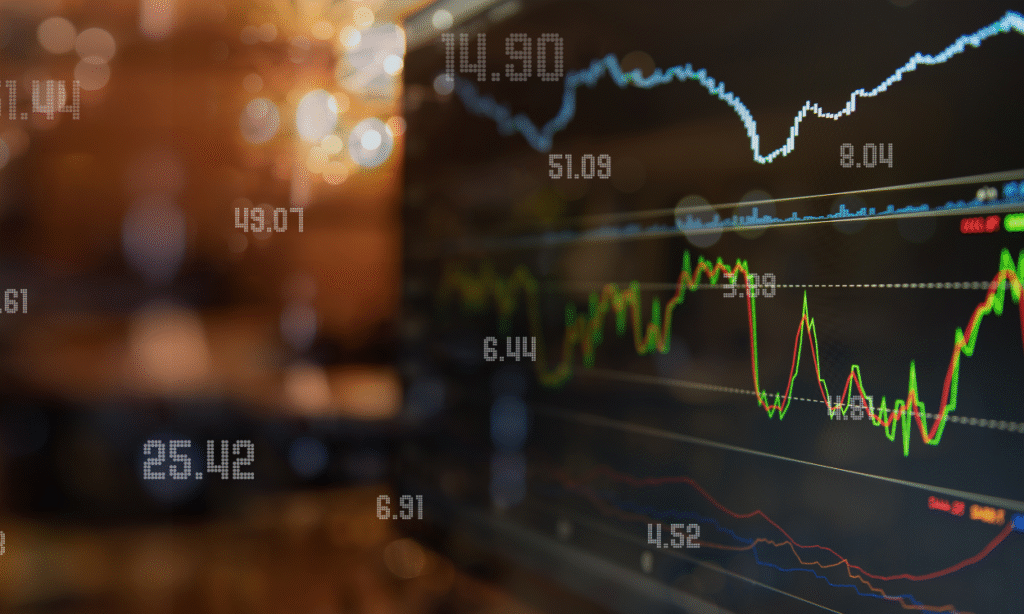
The momentum of global sustainable debt issuance has remained strong from 2021 through 2025, with sustainable finance reaching US$975 billion in just seven months. Yet the green finance market showed some interesting shifts as sustainability-linked loans saw a noticeable drop compared to the previous year.
In 2025, green bonds have led the sustainable debt market, and the global sustainable finance market now manages assets worth US$3.2 trillion, showing ESG’s growing impact on investment choices.
ESG bonds’ performance against traditional securities deserves a closer look. Their structural benefits, greenwashing issues, investor patterns, and the regulatory framework that shapes green finance all play crucial roles. These insights help investors direct their path through this fast-changing sector.
ESG bonds show a competitive edge over conventional securities. Data shows their superior performance characteristics. Bonds with higher ESG ratings work better over the long term. They have lower systemic risk, reduced spreads, and higher valuations. Market metrics now support ESG-aligned instruments’ success rather than just mission-driven investor priorities.
The stability of ESG bonds drives their success. Green government bonds have performed better than conventional measures since 2017. Green corporate bonds are more stable than traditional ones, especially with USD-denominated instruments. This stability becomes valuable during market stress when stable investments are premium assets.
About 88% of investors plan to add more green, social, and sustainable fixed income over the next two years. Two-thirds of issuers say ESG bonds get more subscribers than traditional ones. Even with green bond issuance down 19% compared to Q1 2024, it remains the biggest category by volume.
The “greenium” effect has changed by a lot. ESG bonds trade at lower yields compared to similar conventional bonds.
Three main factors caused this change: supply caught up with demand, better transparency through coordinated taxonomies and reporting, and changing economic conditions with rising interest rates. Q1 2025 saw modest tightening in ESG premia. It went from 0.42 basis points in early January to 0.32 basis points in March. This shows investors still prefer ESG-aligned securities.
Climate resilience has become crucial for investment decisions, driving capital toward ESG bonds.
This transformation reflects a better understanding of climate-related financial risks. Climate catastrophes caused about GBP 128.65 billion in economic losses in early 2025. Companies have reportedly mentioned climate-resilience terms 55% more from 2021 to 2025.
Insurance sector data reinforces this trend. Premiums rose by a lot in climate-vulnerable regions. This strengthens the case for climate-resilient investments like ESG bonds.
ESG bonds ended up outperforming because they combine competitive returns with lower downside risk, making them valuable in today’s volatile market environment.
The market success of ESG debt instruments depends on their structural design. These instruments come in two main types. Each type has its own framework that appeals to different issuers and investors in the growing green finance world.
Green bonds are different from traditional debt because of how they use their proceeds. The lifeblood of a green bond lies in using proceeds only to finance or refinance eligible green projects, according to the Green Bond Principles (GBP). The legal documentation of the security must describe this use properly to create a direct connection between the instrument and its environmental impact.
Green finance bonds need issuers to show clear environmental benefits that experts can assess and measure when possible. On top of that, issuers must show how much goes to financing versus refinancing and specify which investments qualify for refinancing when using proceeds this way.
The GBP clearly defines several categories that qualify as green projects:
This clear outline of how proceeds are used gives green bonds a key structural advantage over general-purpose debt through better transparency and accountability.
Sustainability-linked loans (SLLs) take a different path from use-of-proceeds instruments. These loans don’t restrict fund usage but link their economic features to meeting ambitious, preset sustainability targets. Borrowers without specific green projects can still access sustainable finance through this framework.
SLLs stand out because of their flexible reward system. Better loan terms await borrowers who meet certain green KPIs or ESG requirements. The loans typically offer lower margins to borrowers who hit their sustainability performance targets (SPTs), which creates a direct financial reward for better ESG performance.
The SLL market has seen explosive growth. Global sustainable lending grew from $4.76 billion in January 2016 to $255.72 billion by September 2021. SLLs made up 90% of the sustainable loan market by then, showing their wide appeal to companies of all types beyond utilities. These loans tend to be big, with average deals reaching $744.13 million—almost 80% larger than regular loans.
The green finance market’s rapid growth comes with major credibility challenges that could shake investor confidence in the long run. More market players now question whether ESG-labeled instruments deliver their environmental promises or just serve as clever financial packaging.
Most sustainability-linked instruments use key performance indicators (KPIs) and sustainability performance targets (SPTs) that lack real ambition. Investors find it hard to evaluate sustainability-linked bonds because of basic or unclear KPIs. Deal arrangers themselves have raised red flags, with industry leaders pointing out “a lot of greenwashing” in sustainability-linked bonds.
These instruments have several critical flaws:
Research shows that only 14% of bonds in the US$221.57 billion sustainability-linked bond market match Paris Agreement goals. The situation gets worse as roughly 10% of these bonds don’t even reveal basic details like KPIs and targets.
Regulators have stepped up their efforts to curb greenwashing. The European Union created its Green Bond Standard as a voluntary “gold standard” that uses detailed EU taxonomy to define green economic activities. This standard helps promote consistency in the green bond market and reduces greenwashing risks through market-aligned transparency.
Canada’s Bill C-59 marks another regulatory milestone that makes companies prove their environmental claims’ accuracy. Companies must now base their environmental statements on “adequate and proper testing” using globally recognized methods. Repeat offenders face penalties up to £11.91 million.
Bill C-59’s impact is already showing. Canada’s Competition Bureau released final guidelines on environmental claims in June 2025 after reviewing more than 400 submissions from two consultation rounds. These guidelines make it clear that environmental claims must not be “materially false or misleading.”
Third-party assurance plays a crucial role in building ESG reporting credibility. ESG ratings providers face heavy criticism about their assessment reliability. Different methodologies create confusion—correlations between major providers range from 0.14 (ISS and S&P Global) to 0.65 (S&P Global and Sustainalytics).
Beyond consistency problems, ESG ratings show an upward trend over time. Russell 1000 companies’ analysis revealed an 18% overall improvement from 2015-2021, with structural changes driving 6 percentage points of this improvement. Changes in index makeup and rating models’ component weightings contributed to this shift.
The industry now develops better ESG data verification processes. New machine learning algorithms help identify verification candidates, while auction systems ensure strategic verifier selection. This creates an ecosystem that promotes truthfulness throughout ESG verification.

The global scale of eco-friendly investments has grown substantially, yet each region tells a different story. Market analysis reveals both exciting opportunities and unexpected setbacks in different parts of the world.
Global sustainable fund assets hit a remarkable $3.2 trillion by March 2025’s end. This marks an 8% jump from last year and quadruples the 2018 figures. Europe leads the pack with 84% of global sustainable assets. The United States holds 11% of the market share, down from 15% in 2018. Other regions have gradually increased their share to 2.3% in 2024, from just 0.7% in 2018. Asia’s sustainable fund market remains small but shows promising signs of growth in several key areas.
ESG investing’s popularity has cooled off lately. The number of investors who factor in ESG criteria has dropped from 66% in 2021 to 48% in 2024. Only 17% of people now believe ESG investing boosts performance, compared to 22% last year. Yes, it is worth noting that shareholder backing for ESG proposals hit bottom, with just 1.4% getting majority approval in 2024.
Traditional funds now outperform their sustainable rivals in capital flows. These funds saw 4.8% inflows relative to last year’s assets under management in 2024, beating sustainable funds for the first time in five years.
The gap between regions in sustainable investing continues to widen. US sustainable funds have seen money flow out for ten straight quarters since late 2022. Investors pulled £4.84 billion in Q1 2025 alone. Political headwinds have played a role, with at least 18 Republican-led states passing anti-ESG laws.
Europe paints a different picture, as its sustainable funds attracted £25.65 billion in late 2024. Asian markets lead the pack in relative growth, with inflows at 6.4% of last year’s AUM, beating Europe’s 2.3%. Taiwan has seen steady inflows since Q4 2023. Thailand’s sustainable fund market doubled to $933 million, while Singapore’s assets grew by 81%.
Green finance regulations in major financial markets continue to get stricter as we move into 2025. New rules want to improve transparency, make disclosures more standard, and curb greenwashing.
The EU’s Sustainable Finance Disclosure Regulation (SFDR) makes financial market participants show how sustainability risks affect their investment decisions and their negative effects on the environment and society. The Corporate Sustainability Reporting Directive (CSRD) works alongside this by requiring companies to use European Sustainability Reporting Standards (ESRS) in reports published in 2025. The European Commission is now getting a full picture of the SFDR framework, which could lead to changes in laws throughout 2025.
The Securities and Exchange Commission created new rules in March 2024. Companies must now reveal climate-related risks that affect their business strategy and operations. California also passed Senate Bills 253 and 261, which require companies in the state to report greenhouse gas emissions and climate-related financial risks starting in 2026. These regulations face legal hurdles today, as the U.S. Fifth Circuit Court has put a temporary hold until further review.
The EU taxonomy serves as the lifeblood classification system that defines what makes economic activities environmentally sustainable. More than 50 taxonomies exist or are being developed worldwide. Different countries have their own views on transition paths, which creates challenges for multinational businesses that must work with multiple frameworks.
The green finance landscape in 2025 highlights both the maturity and the growing complexity of sustainable investing. ESG bonds are still the top performers in the market, showing good results, less price fluctuation, and a clear connection between making money and helping the environment, while sustainability-linked loans provide more options for accessing sustainable funding. Yet, the sector still faces credibility risks, with greenwashing and inconsistent ESG ratings threatening investor confidence. Stronger global regulations, such as the EU Green Bond Standard and Canada’s Bill C-59, signal a shift toward transparency and accountability. As investors focus more on climate resilience and real results, the future of green finance will rely on growing while also being honest—making sure that claims about sustainability are supported by actual performance and proof.
